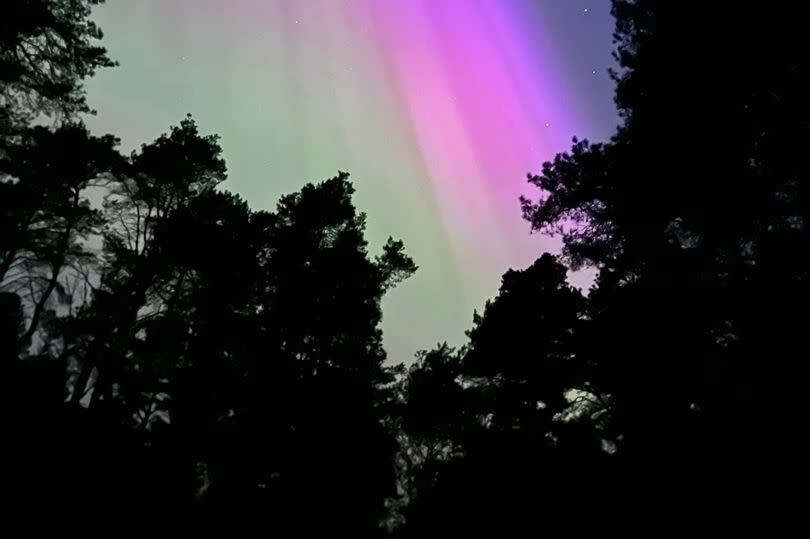BBC weather expert reveals why you may have missed the Northern Lights on Saturday

A weather expert has explained why many people were left disappointed at the Northern Lights show on Saturday night - and why many will not have seen them. Writing on the BBC website, Simon King said that the geomagnetic activity was high, meaning the Sun was bombarding the Earth.
He said the activity was: “Very high throughout Saturday, so the aurora was above our heads but sadly not when the sky was dark enough to see it. There were indications that activity would not be in the extreme “G5” category as it was on Friday night but weakened to a severe “G3”.”
Even at that level experts thought that there was a high chance it would be visible anywhere across the UK. He explained: “It was indeed at this level into the evening but, just as darkness fell, geomagnetic levels fell below the threshold, leaving many of us rather disappointed at seeing nothing. Activity picked up again after midnight but many of us might have given up by that point.”
READ MORE:
The Sun has been very active he said: “Numerous Coronal Mass Ejections (CME) – like volcanoes – from the sunspots send charged particles into space and, when directed towards Earth, they give us the aurora. The CMEs can have varying strengths and different speeds so can sometimes catch each other up and become more powerful just as they hit Earth.
“Forecasters at NOAA and the Met Office Space Weather centre are predicting the arrival of another strong CME on Sunday and into Monday. Geomagnetic activity is expected to be strong to severe (G4) with a chance of an increase at times to extreme (G5).
“Therefore, for another chance to see the aurora – anywhere in the UK - you might want to keep an eye on things on Sunday night. However, there will be more cloud – and thundery showers – across Scotland into northern England and parts of the Midlands which may scupper any chance of seeing the aurora.”
According to the US National Oceanic and Atmospheric Administration (NOAA), the earth was hit by a G5 geomagnetic storm on Thursday. A G5 rating is considered “extreme” and the strongest level of solar storm. The cause of this storm was a “large, complex” sunspot cluster, 17 times the diameter of Earth.
The last storm with a G5 rating hit Earth more than 20 years ago in October 2003 and caused power outages in Sweden. Every 11 years, the sun’s poles reverse, causing bursts of solar activity resulting in northern lights. Scientists predict the next solar maximum will occur at the end of 2024.

 Yahoo News
Yahoo News 
